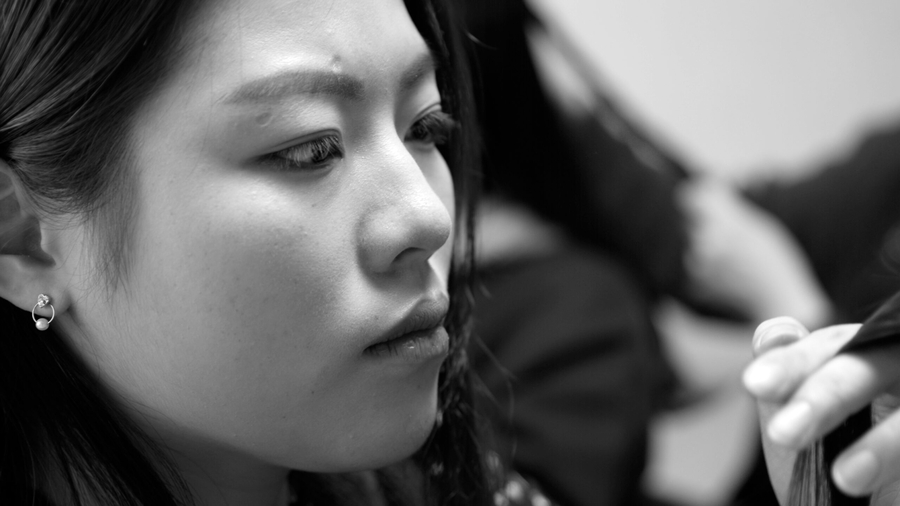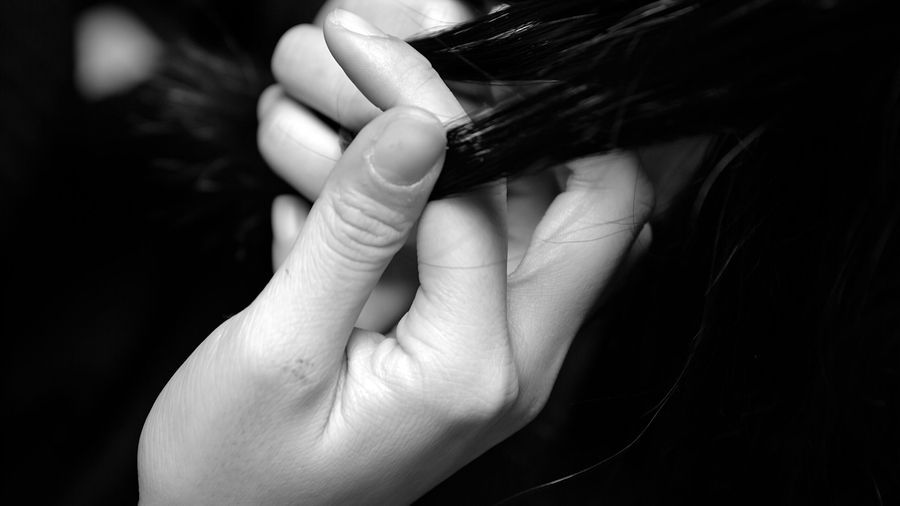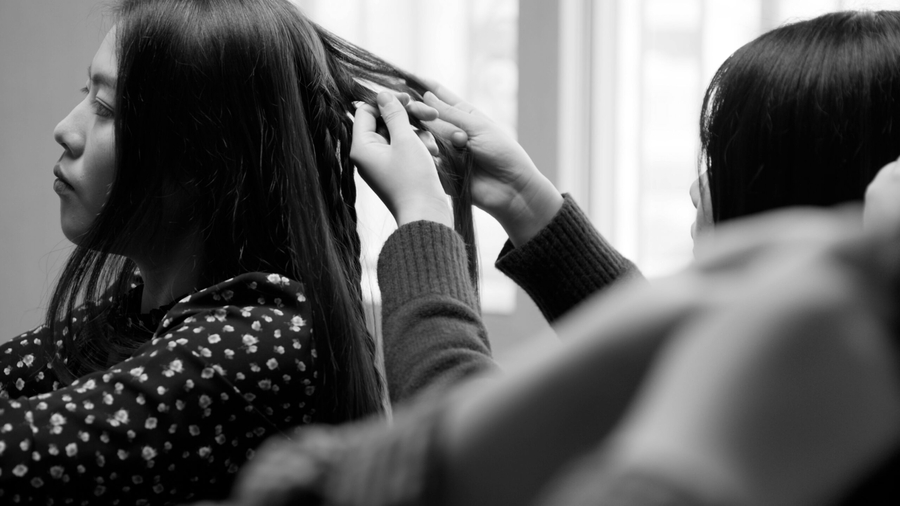Jane Jin Kaisen Braiding and Mending

The two-channel video Braiding and Mending features South Korean-Danish artist Jane Jin Kaisen sitting with her sisters and nieces in a circle, the camera revolving around them in calm, meditative movements. Each participant combs and braids the hair of the woman in front of her, connecting them all in a perpetual cycle. The braiding becomes a memory-making gesture, and a process of mutual care and healing.

The following is an excerpt from Crystal Mun-Hye Baik’s “To Gather, To Part, To Return: An Aesthetics of Abandonment” in the exhibition catalogue Jane Jin Kaisen: Community of Parting (Seoul: Art Sonje Center, 2021; pp84–8).
To Gather
In Jane Jin Kaisen’s dual-channel video installation Braiding and Mending (2020), a gathering of women sit in a circle, attending to one another through the braiding of hair. The camera revolves around the circle to capture the intimacy of the scene through close-up views of hands and faces: each woman is connected to the woman in front of her through the act of braiding and the smoothing out of hair. Describing the gathering as “a mutual healing and memory-making act,” Kaisen shares that the women depicted in the video include herself alongside her sisters and nieces. Unfolding in slow and rhythmic movements, the shared process of braiding within this circle of women transforms into a collective act of repair.


[…] This tender scene of gathering is entwined with a different set of images, or (an)other archive, that remains beyond the frame but is nevertheless evoked by the word “mending.” Mending, after all, implies that the work of repair is necessary to attend to an unresolved history of harm and violence that conditions a web of relationships. Yet, this very history of harm may remain obscured from or invisible to the naked eye. With this mind, […] the curative scene of proximity, touch, and familial connection in Braiding and Mending is haunted by a radically different aesthetic – one that I provisionally describe as an aesthetic of abandonment.

To Part
[…] Braiding and Mending […] is concerned with racialized and gendered genealogies of social kinship produced by war, colonialism, militarized occupation, and separation in Korea. These genealogies include sex workers affiliated with the US military and Korean transnational adoptees raised in Europe, such as Kaisen. An enterprise that emerged after 1945, Korean transnational adoption crystallized at the crossroads of US military occupation; heteropatriarchy and white supremacy; a near absence of social welfare support for South Korean citizens; and a Christianized discourse of American humanitarianism. Scholars Arissa Oh and SooJin Pate emphasize that US military intervention in Korea, combined with a Christianized humanitarian impulse, framed Western families as altruistic saviors of “destitute orphans” from “Asiatic” countries. Birth mothers, especially those affiliated with US servicemen, were socially stigmatized and ostracized by Korean society.


Throughout the 1950s and early 1960s, most Korean children adopted were multiracial (born to Korean mothers and US military servicemen) and for decades, most overseas adoptees were young girls or assigned female at birth. The consequences of South Korea’s transnational adoption policy have been tremendous, on a systemic and personal level. Between 1950 and 2000, almost 200,000 children were exported to North America and Europe, with an estimated $3.3 billion (US dollars) generated as revenue. In some cases, siblings including twins were separated at birth, while children at times were told by adoption agencies that their birth families had passed away, even if this was untrue.”

Curated by Gaëlle Morel
Presented by The Image Centre in partnership with CONTACT
Jane Jin Kaisen is an artist, filmmaker, and Professor of the School of Media Arts at The Royal Danish Academy of Fine Arts. Her practice spans the mediums of video installation, narrative experimental film, photography, performance, and text, and is informed by extensive interdisciplinary research and long-term engagement with diverse communities. Engaging topics such as memory, migration, borders, and translation, she activates the field where lived experience and embodied knowledge intersect with larger political histories. She represented Korea at the 58th Venice Biennale and has exhibited her work in a wide range of international contexts.